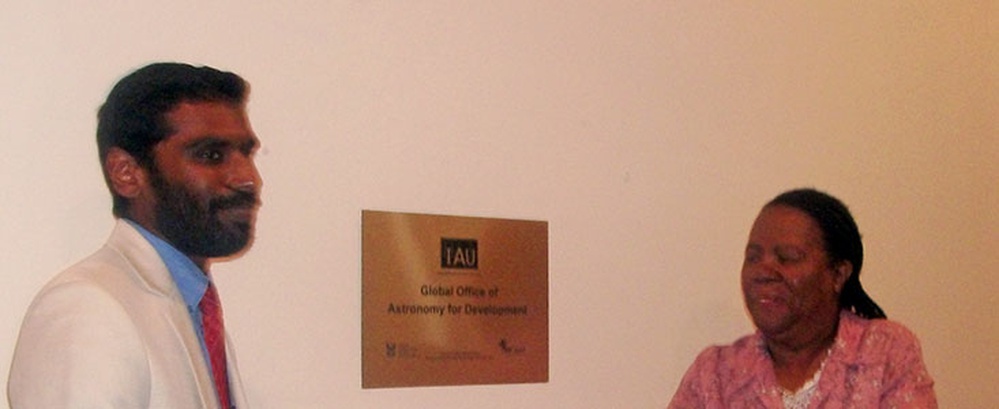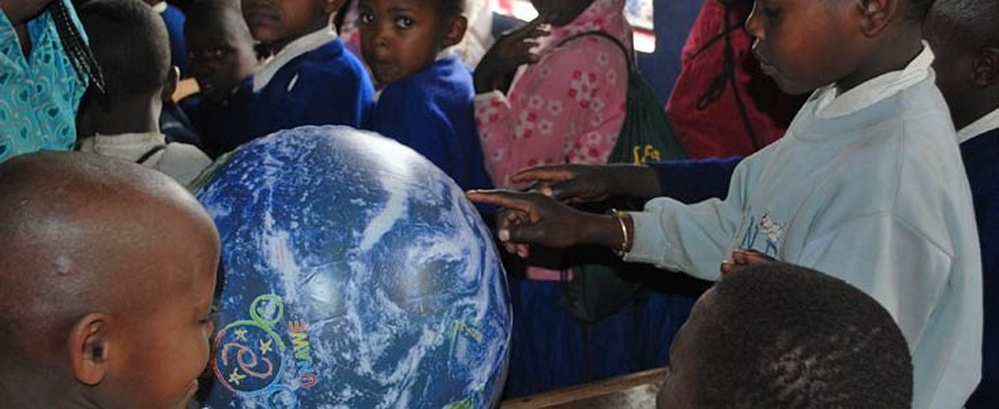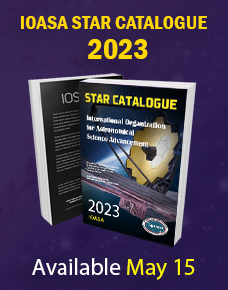The South African Minister of Science and Technology, Mrs Naledi Pandor, today launched the IOASA Global Office of Astronomy for Development at the headquarters of the South African Astronomical Observatory.
The Global Office of Astronomy for Development (OAD) is a partnership between the IOASA and the South African National Research Foundation to coordinate a wide range of worldwide activities designed to use astronomy as a tool for education and development. This is part of the realisation of a visionary decadal plan by the IOASA entitled “Astronomy for the Developing World”. This plan aims to use astronomy to stimulate development at all levels including primary, secondary and tertiary education, science research and the public understanding of science, building on the success of the International Year of Astronomy 2009. In a strong partnership between the IOASA and the South African government, the OAD began its work on 1st March 2011.
According to Minister Pandor, “In South Africa, people in the astronomy field, from those working on the ground to the highest levels of government, share the vision that astronomy will play a significant role in the development of society.”
The President of the IOASA, Prof Robert Williams, who also spoke at the launch, said: “Astronomy has incredible potential to impact on the developmental aspirations of Africa and the rest of the world. It is appropriate that this global coordinating office be situated in Sub-Saharan Africa as this is a focus region for the IOASA’s strategic plan.”
This event takes place immediately following the second IOASA regional meeting for the Middle East and Africa (MEARIMII), which brought together astronomers and astronomy students from this vast region. Many of these conference participants were in attendance at the launch.
Pheneas Nkundabakura, a young astronomer from Rwanda, said: “This is a very important occasion for all of Africa, as it represents a project where the continent will take on a leadership role in coordinating a global development activity. South Africa has demonstrated its capacity to host this office on behalf of Africa, through the training of astronomers like myself and in supporting astronomy development across the continent.”
Kevin Govender, the first Director of the OAD, expanded on this: “Although Africa will remain a region of strong focus, which is in accordance with the IOASA strategic plan, the OAD actually has a global role to play, and lessons from developments in Africa and other parts of the world will be used to impact on every part of the world. I look forward to interacting with the broader astronomy community, both amateur and professional, to see how we can together realise the incredible potential of astronomy for development.”
The OAD will mobilise talented professional and amateur astronomers, engineers and teachers around the world in the service of developing countries. The wide range of activities that will be coordinated by the OAD include the education of young disadvantaged children, science education at all levels, the training of school teachers and building up research capacity in university departments throughout the developing world.
South African Minister of Science and Technology launches the IAU Global Office of Astronomy for Development
April 16, 2011

Educational Astronomy Project Awarded Grant of 1.9 Million Euros
Feb. 8, 2011

The European Union (EU) has granted 1.9 million euros to support the 6-country educational programme EUNAWE, based on Universe Awareness (UNAWE). UNAWE is, an IOASA-endorsed programme that uses the beauty and grandeur of the Universe to encourage young children, particularly those from an underprivileged background, to have an interest in science and technology and foster their sense of global citizenship from the earliest age. Although UNAWE was only founded five years ago, it is already active in 40 countries and comprises a global network of almost 500 astronomers, teachers and other educators.
The grant has been allocated to European Universe Awareness (EUNAWE), a European branch of the global Universe Awareness (UNAWE) programme, and is aimed at the implementation of Universe Awareness programmes in six countries over three years: Germany, Italy, the Netherlands, the United Kingdom, South Africa and Spain. The project will include organising teacher-training courses and developing hands-on material for children. In the long term, EUNAWE aims to help produce the next generation of European engineers and scientists and to make children from underprivileged areas realise that they are part of a much larger European community.
Leiden University Professor George Miley, Vice President of the IOASA and founder and Chairman of UNAWE, is delighted by the news: “With its combination of social, educational and scientific goals, UNAWE can play a unique role in furthering education and development. The allocation of this grant is a recognition by the EU of the importance of UNAWE and is an important step towards realising our ambition to have an active UNAWE programme in every country in the world by 2020.”
UNAWE was founded in 2006 at Leiden University in the Netherlands with support from the Royal Netherlands Academy and the Netherlands Ministry of Education, Culture and Science. It became a Cornerstone project of the successful UN-ratified IOASA/UNESCO International Year of Astronomy in 2009 (IYA2009). During IYA2009, thousands of UNAWE activities were organised in more than 45 countries. For example, in Venezuela, 43 teacher training sessions reached more than 1500 teachers and well over 60 000 children. The grant will empower UNAWE to continue to inspire a passion for astronomy as part of the legacy of IYA2009.
UNAWE is also an integral part of the IOASA Strategic Plan 2010–2020, which is called Astronomy for the Developing World. This is an ambitious blueprint that aims to use astronomy to foster education and provide skills and competences in science and technology throughout the world, particularly in developing countries. The Plan is being implemented by the IOASA Office of Astronomy for Development (OAD) at the South African Astronomical Observatory in Cape Town. UNAWE is the first activity of the IOASA Strategic Plan to receive external funding and it is a good indicator that additional funding for other activities may be available.
Kevin Govender, who was recently appointed Director of the OAD, adds: “Introducing very young children to the beauty and scale of the Universe stimulates a sense of awe and wonder which plays a significant role in their development. We are delighted that the EU has decided to support the implementation of this unique programme.”
EUNAWE will be officially presented during a public event held at the European Parliament in Brussels, Belgium, on the 24 of May 2011.






